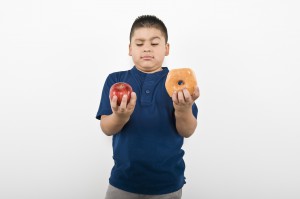
According to the CDC, 11% of Arizona high school age adolescents are obese. (photo credit: BigStockPhoto.com)
There is no question that childhood obesity is one of the greatest challenges facing both our country and our state. According to the Centers for Disease Control (CDC), the obesity rate among children has doubled in the last 30 years and among teenagers in that same timeframe, it has tripled. As of 2010, more than a third of all adolescents were either overweight or obese. As of the most recent annual data available (2011) only 4 states had high school student obesity rates that remained 9% or lower, and Arizona was not one of them. The CDC stats show that in 2011, 11% of Arizona’s high school age adolescents were obese.
While we can all agree that being overweight isn’t healthy, when it comes to adolescents, the health consequences are significant and can be lifelong. The CDC explains that 70% of obese children are already experiencing one of the risk factors for cardiovascular disease like high cholesterol or elevated blood pressure. Additionally, obese children are more likely to become diabetic, experience problems with bones and joints, be diagnosed with sleep apnea, and face difficulties with socialization, fitting in with their peers, and self esteem. This is a dire prognosis for anyone’s future but when you consider it may apply to someone as young as 5 years old, it is clear why we must all do everything we can to fight childhood obesity in any way we can. Here are some helpful things you can do this month to help turn the tide in this fight for the future of America’s children.
1. Don’t Put Them on a Diet
Unless a child’s doctor indicates that the child or teen needs to lose weight, the best approach is to work on maintaining the current weight as the child grows. This is an important difference between adults and children and ensures growing children are not deprived of the nutritional components and necessary energy needed to sustain normal growth and development.
2. Find a Better Balance
Maintaining a healthy weight isn’t about following restrictive diets or about exercising for hours every day. It is about finding the right balance between the foods you and your child like to eat and the nutrition and energy your bodies needs to function optimally and remain active.
3. Change What You Eat
Don’t think about taking certain foods away; look for ways to add new healthier food options into your family meals and snacks. Identify ways you can add more fruits and vegetables to your plate, swap in lower calorie items for family favorites, and try new recipes that focus on healthier ingredients.
4. Make Family Time Active
Everyone is looking for ways to fit more time with their family and more time for fitness into their lives and if you can combine both, everyone wins, especially your children. Look for fun, active things to do together like going for a bike ride, hiking, playing soccer, or really anything that gets everyone up and moving together.
Related articles
- How We Are Helping Make the Next Generation Healthier (fillyourplate.org)
- How Not to Eat When Something’s Eating You (fillyourplate.org)
- How We Are Helping Make the Next Generation Healthier: Continued (fillyourplate.org)

